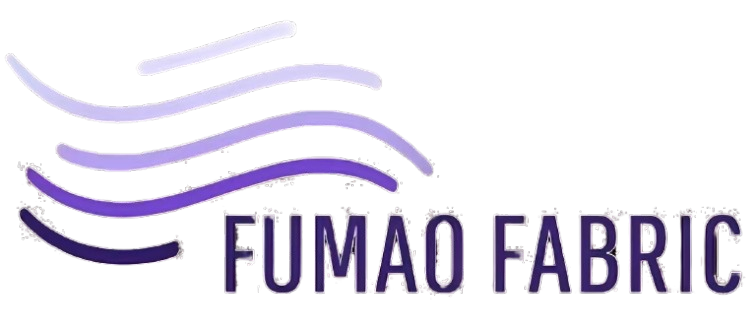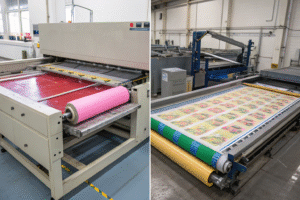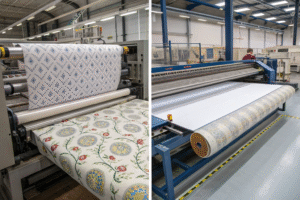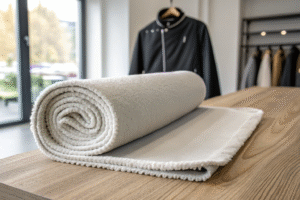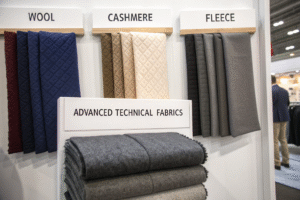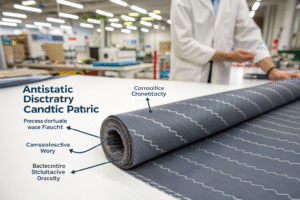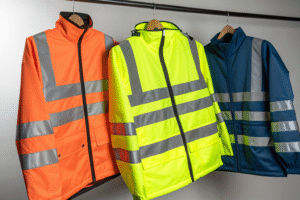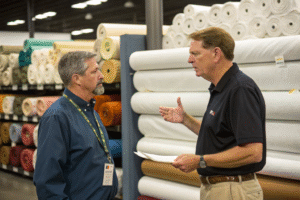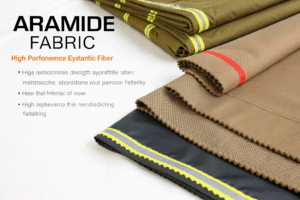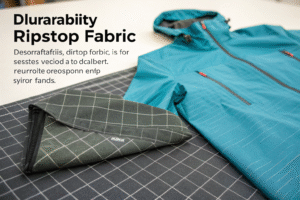In the medical field, fabric choice isn’t just about touch or appearance—it’s about saving lives. Whether you manufacture surgical gowns, hospital bedding, or wound dressings, the fabrics you use must meet strict health, safety, and hygiene requirements. However, sourcing customized technical fabrics that are both compliant and cost-effective can feel like navigating a maze.
To source custom technical fabrics for medical use, you need to partner with certified suppliers, define clear performance specifications, verify compliance with international medical standards, and ensure consistent quality control through traceable production.
This article explains how to break down these complex steps into actionable sourcing strategies, especially if you're considering OEM production in Asia.
What Are the Key Fabric Requirements for Medical Use?
Medical-grade textiles serve functions far beyond fashion. They must resist fluids, inhibit microbial growth, be skin-friendly, and often disposable or washable under high heat. Therefore, sourcing them requires understanding their technical function—not just aesthetics or weight.
The most common requirements for medical fabrics include fluid resistance, antimicrobial treatment, breathability, hypoallergenic properties, and cleanroom compatibility.
![]()
Why Is Fluid Resistance Critical?
Fabrics used for surgical drapes, gowns, and PPE need to act as barriers against blood, body fluids, and airborne pathogens. Non-woven materials like SMS (spunbond-meltblown-spunbond) and laminated woven polyesters with PU coatings provide this barrier. See the FDA classification for PPE fabric types.
At Fumao, we supply medical clients with PU-coated polyester taffeta that passes hydrostatic head tests over 1000mm. These materials are also resistant to alcohol and saline, suitable for operating environments.
What About Antibacterial Performance?
Antibacterial finishes such as silver ion, zinc oxide, or quaternary ammonium can be applied to base fabrics. These inhibit bacterial growth and reduce odor. Our CNAS-certified lab tests efficacy using AATCC 100 and ASTM E2149 protocols. Learn more about antimicrobial textiles here.
Which Medical Standards Must Suppliers Meet?
You can’t rely on appearance alone. Medical textile sourcing must be backed by regulatory compliance. Whether you’re producing for the U.S., EU, or Middle Eastern markets, different certifications apply.
Look for suppliers who meet ISO 13485, OEKO-TEX® Standard 100, EN13795, and FDA or CE compliance—depending on application and export region.

What Global Standards Apply to Medical Textiles?
Here are some essential standards to consider:
| Region | Standard | Purpose |
|---|---|---|
| US | FDA 510(k), AAMI PB70 | PPE and surgical fabrics |
| EU | EN13795, CE marking | Surgical gowns, drapes |
| Global | ISO 13485 | Medical device quality systems |
| Global | OEKO-TEX® | Textile safety (chemical-free) |
Our factory meets ISO 9001 and has production lines audited under ISO 13485 principles. We work with third-party labs like SGS and Intertek for external certification and testing.
Can Chinese Mills Match These Standards?
Yes—when you choose the right partner. Fumao works with over 12 medical fabric brands globally, offering traceable supply chains. We use QR-coded inspection and batch tracking, enabling real-time access to shrinkage, finish treatment, and microbial performance.
How to Customize Fabric Performance for Specific Medical Needs?
Customizing a fabric for medical use often starts with a base fiber, then adds layers of functionality: coating, lamination, or finishing. Your supplier must understand how to combine these properties while maintaining performance through repeated use or sterilization.
To develop custom medical fabrics, you must clearly define fiber type, functional treatments, fabric structure, testing standards, and end-use context.

What Custom Features Can Be Added?
Here are common functional options you can request:
- Anti-bacterial finish: silver ion, zinc oxide
- Fluid resistance: PU/PVC/TPU lamination
- Breathability: micro-perforation, nonwoven mesh
- Anti-static or flame retardant: for cleanroom garments
- Biocompatibility: for wound-contacting fabrics
We recently helped a UAE uniform supplier switch from coated nylon to a custom polyester/viscose blend with antimicrobial coating and EN13795 compliance—reducing weight by 30% while improving comfort.
How Is Sampling and Lab Testing Handled?
Fumao offers 3–5 day turnaround for swatch development and 7–10 days for finished samples. We test each lot in our lab and also coordinate with ITS or SGS for export compliance testing. Reports are provided in English with full parameter traceability.
How to Ensure Consistency and Logistics for Medical Fabric Supply?
Inconsistent quality or delayed delivery can ruin a medical textile supply chain. Hospitals and health systems operate on strict compliance cycles, and garment makers can’t afford variable lots. That’s why it’s essential to choose suppliers with end-to-end quality control and export logistics experience.
Choose suppliers with in-house QA teams, digital traceability, bonded warehousing, and DDP shipping options tailored for medical textile clients.

What Quality Control Systems Should Be in Place?
We follow a 4-step QC process:
- Raw Material Check – yarn source and finish compatibility
- Mid-Production Audit – coating weight, GSM, and bonding consistency
- Post-Production Test – antibacterial, waterproof, strength
- Final Roll Inspection – color, hand-feel, edge defects
Using our internal app, clients can view QC photos, lab data, and compliance certificates online before shipment. Similar systems are used by Medline and other global medical suppliers.
How Are Shipments Handled Globally?
For clients in the U.S. and EU, we offer DDP service through Ningbo and Shanghai. With bonded warehousing in Keqiao and UAE, we consolidate orders and label by client-specific standards. Our logistics network allows express LCL or sea-air hybrid shipping for urgent orders. Packaging complies with medical textile export labeling.
Conclusion
Custom sourcing of medical-use fabrics doesn’t need to be risky or overwhelming. By understanding the technical needs, required certifications, and customization options, you can find a Chinese partner that balances performance, price, and compliance. At Fumao, we combine lab-level textile innovation with agile production and medical-grade testing, serving clients across PPE, hospital bedding, and technical medical devices. Reach out to co-develop fabrics that meet not only industry benchmarks—but save lives in the real world.
